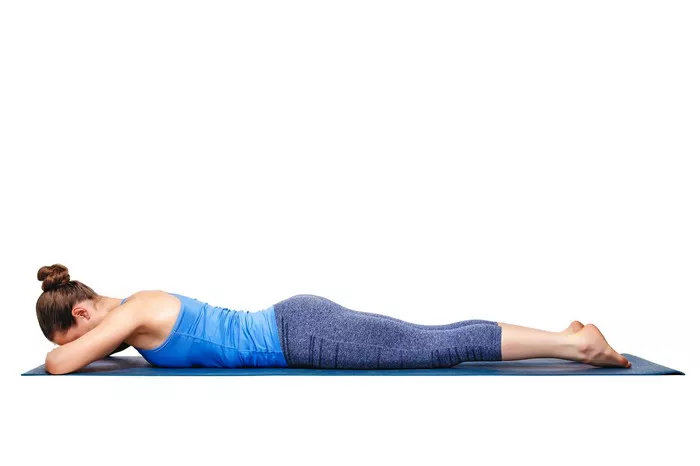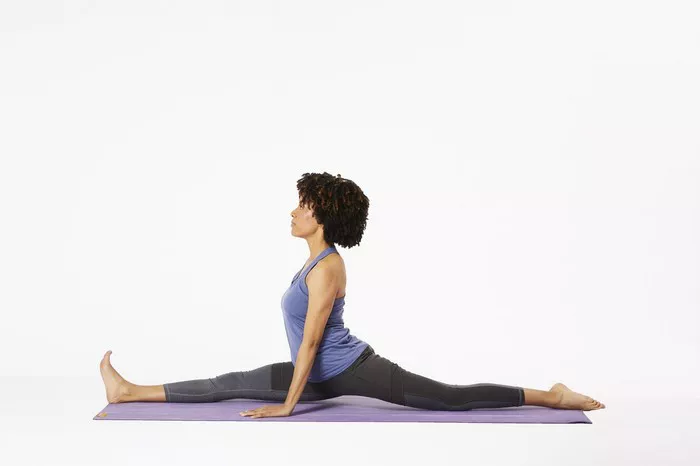Yoga is an ancient practice that has evolved over thousands of years, blending physical postures, breath control, meditation, and philosophy. In recent decades, yoga has gained immense popularity worldwide, especially for its benefits on physical health. Whether you’re looking for a workout, stress relief, or a way to improve your flexibility, yoga offers a holistic approach to maintaining and enhancing your physical well-being. But what exactly does yoga do for the body?
In this article, we will explore the many physical benefits of yoga in detail, from improving flexibility and strength to enhancing posture, digestion, and even cardiovascular health. Let’s dive into how yoga works on different parts of the body, and why it’s so effective for maintaining overall health.
1. Increases Flexibility
One of the most obvious and well-known benefits of yoga is improved flexibility. Most yoga postures, or asanas, involve stretching the body in various directions, which helps to increase the length of muscles and the range of motion of joints. Regular practice of yoga gradually loosens tight muscles and promotes greater flexibility in the body.
The process of stretching through yoga also helps to increase blood flow to the muscles, which aids in muscle recovery, reduces soreness, and prevents injuries. For example, poses like Downward Dog, Forward Fold, and Pigeon Pose stretch the hamstrings, back, hips, and other areas of the body that tend to be tight, especially for those who spend a lot of time sitting.
Increasing flexibility not only benefits the muscles but also the joints, allowing them to move more freely and with less discomfort. This is especially important as we age, as joint stiffness tends to increase, and maintaining flexibility can help prevent conditions like arthritis.
2. Builds Strength
Yoga is not just about stretching; it’s also an excellent way to build strength. Many yoga poses require the body to support its own weight, which strengthens muscles throughout the body. For example, Plank Pose, Warrior Pose, and Chair Pose are all excellent for building strength in the arms, shoulders, legs, and core.
Yoga poses like Chaturanga Dandasana (Four-Limbed Staff Pose) and Utkatasana (Chair Pose) engage multiple muscle groups at once, helping to tone and strengthen the body. Unlike traditional strength training exercises, yoga works muscles in a more balanced and functional way.
Yoga’s focus on controlled movements and holding positions for extended periods helps build muscle endurance, promoting long-lasting strength. The emphasis on alignment and body awareness also ensures that you develop strength safely and without overloading specific muscle groups.
3. Improves Posture
Yoga encourages awareness of body alignment and balance, which naturally improves posture. In daily life, many of us slouch or adopt improper posture due to prolonged sitting, poor ergonomics, or stress. Over time, poor posture can lead to back pain, neck tension, and even headaches.
Yoga teaches us to align our body in specific ways that promote a neutral spine and proper alignment of the joints. Poses like Mountain Pose, Cobra Pose, and Cat-Cow Stretch help to lengthen the spine, open up the chest, and strengthen the muscles responsible for supporting good posture.
By improving posture, yoga not only relieves tension but also reduces the risk of developing musculoskeletal issues, such as lower back pain or rounded shoulders. With regular practice, your body becomes more aware of its alignment, helping you maintain proper posture throughout the day.
4. Enhances Balance and Coordination
Yoga is excellent for developing balance and coordination. Many yoga poses challenge the body’s stability by requiring you to balance on one foot or hold a position for a long time. Poses such as Tree Pose, Warrior III, and Half Moon Pose help improve your sense of balance, which is essential for preventing falls, especially as we age.
Through yoga, you learn to stabilize your core and engage your muscles to hold positions steadily. As your body strengthens and becomes more attuned to its center of gravity, your overall coordination improves. This increased awareness also enhances your ability to move fluidly and efficiently in everyday activities, from walking to lifting.
5. Boosts Circulation
Yoga promotes better circulation throughout the body. The combination of movement and breath work increases blood flow to the muscles, organs, and tissues. In particular, certain yoga poses, such as Shoulder Stand and Downward Dog, help to reverse the effects of gravity and improve circulation to the heart and brain.
Increased circulation is beneficial for overall health, as it helps oxygenate the body’s tissues, remove waste products, and support the immune system. It also helps to reduce swelling and inflammation, making yoga a great choice for people with circulation issues or those who experience swollen legs or feet from sitting or standing for long periods.
6. Improves Breathing
Breathing is an integral part of yoga practice. In fact, pranayama (breath control) is a key component of many yoga styles. Learning to control your breath in yoga helps to increase lung capacity and improve overall respiratory function. It also promotes relaxation and mental clarity.
Deep, slow breathing during yoga postures helps to oxygenate the blood, calm the nervous system, and reduce stress. Proper breathing can help alleviate conditions like asthma, anxiety, and chronic stress by increasing the efficiency of the respiratory system and improving lung function.
Through practices like Ujjayi Breath, Nadi Shodhana, and Kapalbhati, you can train your lungs to function more effectively, which contributes to better overall health. Moreover, proper breath control helps in maximizing the benefits of each yoga pose and increases stamina and endurance over time.
7. Supports Digestive Health
Yoga has a positive effect on the digestive system. Many yoga poses, especially twists and forward folds, massage the internal organs, helping to improve digestion and alleviate constipation. For instance, poses like Seated Twist and Revolved Triangle Pose gently compress and release pressure on the abdominal organs, encouraging healthy digestion and the elimination of waste.
In addition to promoting physical movement in the digestive organs, yoga can also reduce stress, which is a common cause of digestive issues like irritable bowel syndrome (IBS), bloating, and indigestion. By calming the nervous system and reducing anxiety, yoga helps regulate the digestive process and improve gut health.
8. Promotes Joint Health
Yoga is gentle on the joints and promotes joint health by increasing their range of motion and strengthening the muscles around them. Many yoga poses involve gentle rotation and stretching of the joints, which helps maintain their lubrication and reduces stiffness.
For example, poses like Cat-Cow Stretch, Child’s Pose, and Savasana gently move the spine and joints through their full range of motion, keeping them flexible and pain-free. This is particularly beneficial for people with joint problems, arthritis, or those who experience stiffness from a sedentary lifestyle.
By regularly practicing yoga, you help to improve the strength and mobility of your joints, which can lead to better overall joint health and reduced risk of injury.
9. Enhances Cardiovascular Health
Yoga is not only beneficial for flexibility and strength, but it can also support cardiovascular health. Although yoga is often thought of as a low-intensity practice, certain styles like Vinyasa or Ashtanga Yoga can elevate the heart rate and provide a cardiovascular workout.
Dynamic sequences that flow from one pose to the next help increase circulation, improve heart function, and support overall cardiovascular fitness. Poses like Downward Dog, Warrior II, and Sun Salutations can get the heart pumping and improve the efficiency of the heart and lungs over time.
Yoga has also been shown to lower blood pressure, reduce cholesterol, and improve circulation. Regular practice can decrease the risk of heart disease, stroke, and other cardiovascular issues by promoting overall heart health.
10. Relieves Stress and Tension
Yoga has profound effects on the body’s ability to manage stress. The practice encourages deep breathing, mindfulness, and physical postures that release tension from the muscles and calm the mind. One of the primary ways yoga works is by activating the parasympathetic nervous system (the “rest and digest” response), which counteracts the effects of chronic stress and promotes relaxation.
As stress is released from the body, physical symptoms like muscle tightness, headaches, and high blood pressure often decrease. Practices like Savasana, Yoga Nidra, and restorative poses help to calm the body and mind, leading to a deeper sense of relaxation and mental clarity.
See Also: Is Yoga as Good as Weight Training?
11. Helps in Weight Management
Yoga can support healthy weight management by promoting mindful eating habits, reducing stress, and encouraging regular physical activity. While it may not burn as many calories as high-intensity exercises like running or weightlifting, yoga can help maintain a healthy weight by reducing stress-induced cravings, improving metabolism, and promoting an overall sense of well-being.
Certain styles of yoga, such as Vinyasa Flow and Power Yoga, are more physically demanding and can aid in calorie burning, helping to tone the body and support weight loss efforts. Yoga also encourages a positive body image and mindfulness, which can prevent emotional eating and promote a healthier relationship with food.
Conclusion
Yoga is much more than just a physical workout; it’s a practice that promotes holistic health by nurturing both the body and mind. Whether you’re looking to improve flexibility, build strength, enhance posture, or manage stress, yoga offers numerous physical benefits that can have a lasting impact on your health and well-being.
By incorporating yoga into your routine, you can enjoy a healthier, more balanced life. With its ability to improve circulation, digestion, joint health, and cardiovascular fitness, yoga provides an effective and gentle way to maintain and enhance your physical health, no matter your age or fitness level.
So, what does yoga do for the body? The answer is simple: it strengthens, stretches, relaxes, and rejuvenates your body, leaving you with better physical health and a greater sense of overall well-being.
You Might Be Interested In




















